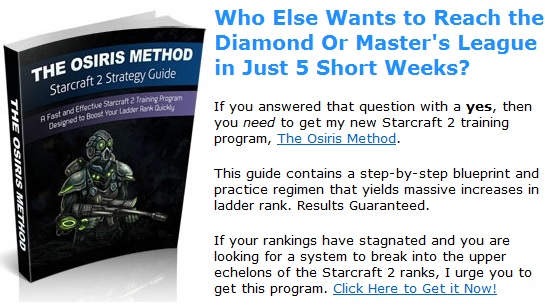Protoss Forge Fast Expand Build OrderHome --> Protoss Guide --> Protoss Build Orders --> Forge Fast Expand (you are here)
The FFE is used in the vast majority of Protoss Zerg matches as all skill levels. The reason this build is so popular is because its purpose is to allow the Protoss player to safely secure their natural expansion early in the game. Once the natural is secured, Protoss players can transition into any tech path or strategy they want off of two bases. Whether players are working towards their third base or going for an Immortal and Sentry all-in timing attacks, the Forge Fast Expand is the opener of choice. In this article, I will be revealing the best build order for the Protoss forge fast expand build and how you can use this build to trounce Zerg players in ladder games. Variants of the Forge Fast Expand Build There are actually three different ways to go about the Forge Fast Expansion build:
Below, we will provide build orders and discuss strategy and the pros and cons of each approach. Forge Into Nexus Build OrderThis is the standard opener for the Forge Fast Expand build. It is generally considered the optimal blend between being economical as well as being safe: 9/10: Pylon (send this Probe to scout) From here, get continue Probe production and get up the Cybernetics Core. You can then progress into any of the tier 2 tech paths or timing attacks of your choice. Fast Wall Off Build OrderIf the Zerg player decides to go for a Zergling rush, you must stop what you are doing and start finishing your wall-in. A 10 pool or earlier can have Zerglings in your base before your Photon Cannon finishes. A good Zerg player will just run right into the mineral line and start attacking Probes. They will micro their Zerglings and keep the Zerglings alive as long as possible, causing huge amounts of distraction and a substantial number of Probe kills. In order to prevent this from happening, you need to wall off your base before the Zerg's Zerglings get to your natural expansion. If you can completely wall off your base, you will give your Photon Cannon a chance to finish. With no way in other than through the Gateway(s), Forge, and Pylons forming the wall into your base and a Photon Cannon attacking safely in the distance, any Zergling rush is effectively over. Here is the build: 9/10: Pylon (this Probe goes out to scout) You never want to opt for this version of the build by default. If you open with this build and the Zerg player goes for Hatchery first, you put yourself at an economic disadvantage. Instead, you should only change to this opener if you send a Probe out to the Zerg player's base and discover that Zerglings are on the way. Keep your Probe in the Zerg's base until you see Zerglings actually spawn. If 6+ Zerglings come out at once before the Zerg opponent even gets a Hatchery, pull a Probe from your main base to quickly wall off your natural expansion before those Zerglings get in position. Nexus First Build OrderGetting a Nexus before the Forge is the most economical way to play with the Forge Fast expansion build. The major downside to this build is that it is risky - should the Zerg player decide to get Zerglings, these Zerglings can be at your base before the Photon Cannon is up. Even if the Zerg goes for a 13 or 14 Pool into an expansion, they can still have a set of Zerglings to your base before your Photon Cannon goes up. If the Zerg player goes for an Overpool or 10 pool, you are likely going to lose the game outright if you go for a Nexus first. With that said, some Protoss players believe that the advantage they gain from opening with the Nexus first is worth the rare auto-loss to Zergling rushes. In a set of 10 games, if they can win 7 out of 10 with this strategy, then losing one out of 10 to a Zergling rush may be deemed worth it. Here is the build order: 9/10: Pylon This build is risky to perform on a 2 player map. You get a lot more protection in the first few minutes of the game by using it on a 4 person map because this forces the Zerg opponent to have to scout you before they can attack with Zerglings. On a two player map, the Zerg player can go for a 6 Pool build and not even scout you at all! Progressing into Mid GameOnce you have set up the Forge Fast Expand, there are a variety of tech paths and game strategies that are viable. Check out our other Protoss build orders for additional builds and strategies that open with the FFE. Many of these builds open with a Forge Fast Expand already worked into the build. One of the most popular options is an Immortal / Sentry timing attack. With this build, the Protoss player quickly moves towards getting 44 Probes (16 on minerals at each base and 6 on gas at each base). A Robotics Facility and 7 or 9 Gateways are added on and used to produce Immortals and Sentries as a priority. Excess resources are dumped into proxy Pylons and Zealots. Once 2-3 Immortals are out, the attack commences with the Protoss player sending in all their forces. There are so many possibilities when opening with the Forge Fast Expand that it is impossible to mention them all on one page. In addition to our build orders page, check out the Protoss vs Zerg strategy section for more ideas for playing against Zerg in the mid and late game.ConclusionLearn the Forge Fast Expand. Study its variants. Practice opening with the build and progressing into the mid and late game. A large number of Protoss players open with the FFE every game against Zerg and have great success with the opener. The build works well - try it out for yourself and see just how effective it can be! |
Don't be shy - share this page on G+ and Twitter!
Sign up for my Free Starcraft 2 Mini-Course where I reveal my best strategies not seen anywhere on this site!
Starcraft 2 Strategy Guide Privacy Policy Contact Us Disclaimer
©2013 www.osirissc2guide.com

